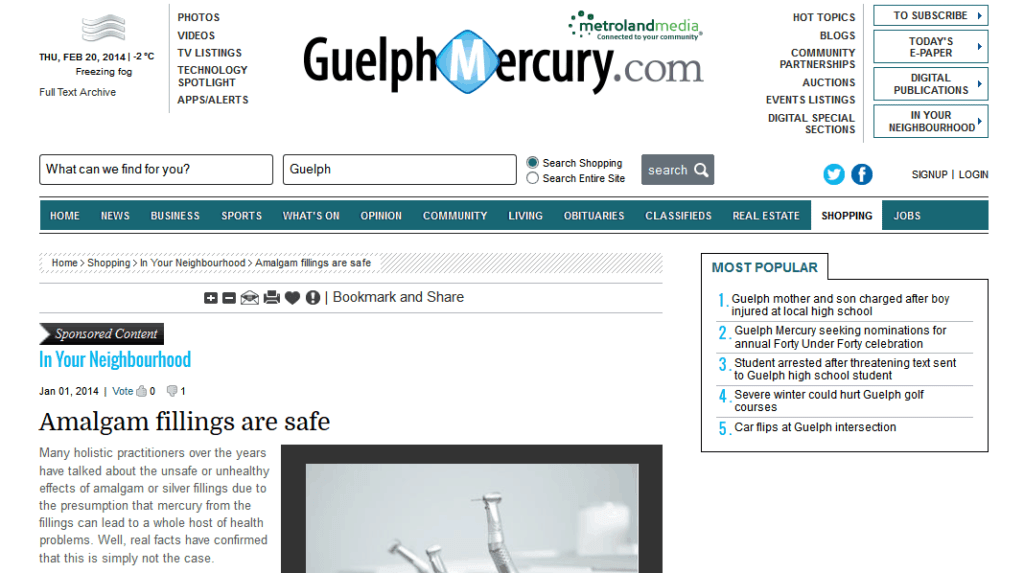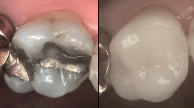Though more and more dentists are saying no to mercury amalgam fillings, the material still has plenty of defenders. It’s sad. And frustrating. And understandable. After all, we humans can be extraordinarily resistant to change, and going mercury-free requires a lot of it.
Swapping out one material for another is just the beginning.
Composite is much more technique sensitive than amalgam, which often means dentists must get additional training to work with resins effectively. It also takes longer to place, which changes up scheduling procedures. New products and equipment may need to be bought. Patients will need to pay more out of pocket, even if insured, since composite restorations cost more – though only in the short run – and insurers will often reimburse only at amalgam rates.
Now, those may seem reasonable justifications for sticking with what you’ve always done. However, they don’t stand up to scientific fact, including the ever-growing evidence of health risks – to the patient, dental staff and environment alike.
And still, you routinely see mind-blowing headlines like this one, a paid/commercial piece we ran across earlier this year in a Canadian newspaper aptly called The Mercury:

The article purports to give “real facts” that “have confirmed” that “many holistic practitioners” have overblown the risks of mercury fillings. What it actually gives are more like the standard misleading and erroneous clichés used to justify dated dental practices.
Consider this claim from the article:
The American Dental Association along with other organizations such as World Health [Organization] and the Center for Disease Control affirm that silver fillings are safe, cost effective and long-lasting.
Sure, the ADA does, but WHO and CDC, not so much. Both acknowledge that mercury vapor released from amalgam contributes to an individual’s toxic body burden and that this may impact their health. That’s hardly a ringing endorsement of “safety.” And in 2009 – well in advance of the UN’s global mercury treaty – a WHO expert consultation called for a global phase down of dental amalgam.
Another claim from the article:
The confusion surrounding this issue is attributed to the fact that when mercury is exposed at high and unsafe levels, it becomes toxic.
Mercury doesn’t “become” toxic; it is toxic – neurotoxic (poisonous to the brain), to be exact. No amount of exposure is considered safe. Perhaps the writer means to draw a difference between elemental mercury and methylmercury, as the latter is considered much more toxic to humans. Pro-amalgam dentists often caution that any mercury released from amalgam is elemental. However, as biological dentist Dr. Gary Verigin notes on his blog,
It has been known for years that mercury from dental amalgam can become methylated in the mouth through bacterial action, and perhaps elsewhere in the body. (More. Yet more.) As Sellars, et al, noted in their 1996 Journal of Nutritional & Environmental Science paper, “Although the amounts found are small…, any measurable amount of methyl mercury contributes to the total body’s burden of mercury.” If the body can’t excrete it, eventually, you’re toast.
Despite the science, the author of the “amalgam is safe” piece insists,
The only time these types of fillings are not safe is when a patient has an allergy to the components of the filling. Amalgam is a blend of tin, copper, zinc and silver.
And mercury. That’s about 50% of the total. Some people may be more sensitive to it than others, but no one is immune to it. Still, the article goes on:
Amalgam fillings are safe because when the mercury combines with the other components of the filling, it becomes an inactive but safe substance.
To put it bluntly, that would take some magic. There is no known way mercury can ever be made non-toxic. The typical material data safety sheet for amalgam highlights its toxicity. Any leftover or removed material must be handled as toxic waste.
Are we to believe there’s something so special about human teeth that they constitute the only living tissue into which amalgam can be inserted without ill effect? That mercury amalgam is toxic everywhere except inside a living tooth?
As ever, science continues to show that this material has no place in dentistry. Just this month, research published in BioMetals cast new light on the very problematic Children’s Amalgam Trials conducted several years back. The ADA, among others, likes to cite these as definitive proof of mercury amalgam’s safety, even for some of our youngest and most vulnerable.
However, four recent reanalyses of one of these trials now suggest harm, particularly to boys with common genetic variants. These and other studies suggest that susceptibility to mercury toxicity differs among individuals based on multiple genes, not all of which have been identified. These studies further suggest that the levels of exposure to mercury vapor from dental amalgams may be unsafe for certain subpopulations. Moreover, a simple comparison of typical exposures versus regulatory safety standards suggests that many people receive unsafe exposures. Chronic mercury toxicity is especially insidious because symptoms are variable and nonspecific, diagnostic tests are often misunderstood, and treatments are speculative at best.
 Current research also puts to the lie the belief that amalgam fillings are more durable or effective than a variety of composites. For instance, one recent study out of South Africa found
Current research also puts to the lie the belief that amalgam fillings are more durable or effective than a variety of composites. For instance, one recent study out of South Africa found
that new generation, high-viscousity glass-ionomers cannot be regarded as inferior to amalgam, since no overall statistically significant difference was found in the clinical failure rate between load bearing high viscosity glass-ionomers and amalgam restorations after follow-up periods ranging from one to six years.
[Co-author Dr Steffen] Mickenautsch says: “The results of SYSTEM’s meta-epidemiological study show that statements concerning glass-ionomers’ inferiority to amalgam and other types of materials are based on incorrect statistical comparison methods. Such methods include the still common naïve-indirect comparison of restoration failure rates from uncontrolled clinical longitudinal studies.”
“Simply put, the traditional argument against the use of glass-ionomers in modern dentistry is based on the wrong assumption that results from unrelated clinical trials with differing clinical settings and patient groups can be directly compared to one another.”
So if they offer no significant improvement and carry health risks, is there any good reason one could give for insisting on amalgam?
The science says no…which is plenty of reason to stop this antique practice.
ACTION ALERT!: While we were preparing this article, we got word of the EPA’s backpedaling on releasing its promised dental amalgam rule for public comment. As Consumers for Dental Choice notes,
If naysayers have their way, there will be no opportunity for public comment on the EPA dental mercury rule…no restrictions on dentists who dump mercury into our communities…and no protection at all for the many children who are subjected to dental mercury exposure twice – once from their own amalgam fillings and again from dental mercury pollution.
We urge you to take a moment to sign their petition and share it via social media and/or email with as many people as you can. Tell the EPA to not let polluting dentists off the hook!